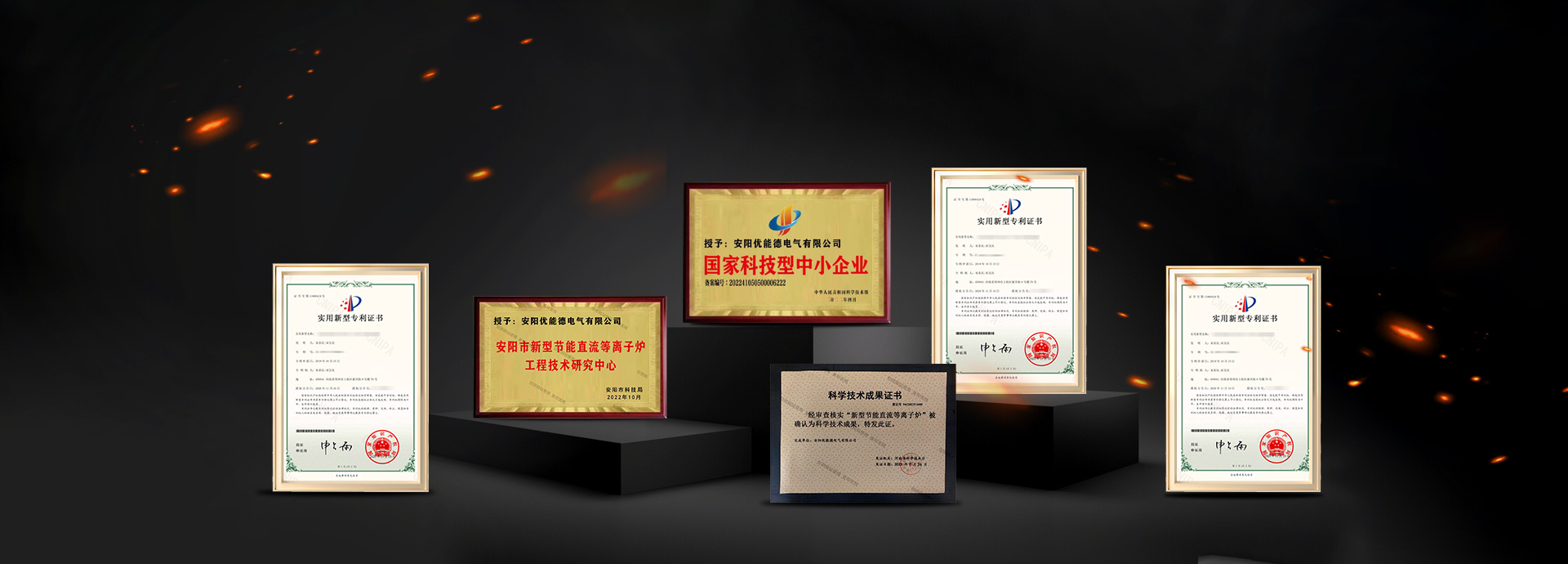Electric arc furnace: the core equipment for industrial heating and melting!
Update Time: 2025-05-08 Follow: 645
In the complex system of modern industrial production, electric arc furnace, as a key equipment that uses arc energy for heating and melting, plays an irreplaceable role in many fields with its unique working principle and significant advantages. From large-scale steelmaking operations in the steel industry, to fine operations in non-ferrous metal smelting, and to cutting-edge explorations in materials science, the presence of electric arc furnaces is ubiquitous, providing strong technical support for the development of various industries.
1. Exploring the Working Principle of Electric Arc Furnace
The core operating mechanism of electric arc furnace is based on the generation and energy release of electric arc.
. Its basic components include furnace body, electrode system, power supply, and control system. The furnace body is carefully constructed with refractory materials, which can resist high temperature environments and chemical erosion, providing a stable and reliable space for metal melting. The electrode system usually uses high-purity graphite electrodes. Under the strong current provided by the power supply, the air or gas between the electrode and the furnace charge is broken down, forming a brilliant and high-temperature arc. The temperature of this arc can soar to over 3000 ℃, which is extremely high enough to quickly melt various metal materials and initiate the melting process. The heating process usually goes through three key stages. The initial stage is preheating of the furnace charge, which gradually increases the temperature of the charge through the heat emitted by the arc, laying the foundation for rapid melting in the future. As the temperature continues to rise and enters the melting stage, the furnace material gradually transforms from a solid state to a liquid state under the direct action of the high-temperature arc, achieving a critical transformation in material form. **The refining stage follows, during which oxygen or other specific gases are precisely blown into the furnace to remove impurities from the metal liquid through chemical reactions, and its composition is finely adjusted to obtain high-quality metals that meet different industrial needs.
II. Diversified Types of Electric Arc Furnaces
(1) AC Electric Arc Furnaces
AC Electric Arc Furnaces have a long history and high technological maturity.
. It uses three-phase AC power as the power source, and the current flows alternately through three graphite electrodes to the furnace charge, forming an arc between the electrodes and the furnace charge. This type of electric arc furnace is widely used in large-scale steel production, with the advantage of relatively low initial investment costs and no need for additional complex rectification equipment. At the same time, due to the high popularity of technology, maintenance work is relatively simple, and there are a large number of experienced technical personnel available for support. However, AC arc furnaces also have some inherent disadvantages, such as slightly inferior energy conversion efficiency compared to DC arc furnaces, because the interaction between three-phase electrodes can cause some energy to be lost without reason. In addition, the noise generated during operation is relatively high, especially when the arc is unstable, and the noise problem is more prominent, causing certain interference to the working environment. At the moment of start-up, the AC electric arc furnace will also have a significant impact on the power grid, causing voltage fluctuations that may affect the normal and stable operation of other surrounding electrical equipment, and its electrode consumption rate is fast, increasing operating costs.
(II) DC Electric Arc Furnace
As a more advanced type of electric arc furnace, DC electric arc furnace has received widespread attention and application in recent years.
. It converts alternating current into direct current through a rectifier, and the current flows from a single graphite electrode (cathode) to the anode at the bottom of the furnace. This unique current transmission method makes the arc more stable and concentrated, significantly reducing energy waste and noise pollution caused by arc flicker. DC arc furnaces perform well in energy conservation, with higher energy conversion efficiency, which can effectively reduce energy consumption and lower operating costs. Meanwhile, due to the stable arc, the wear rate of graphite electrodes is significantly reduced, further saving maintenance costs. In terms of its impact on the power grid, DC arc furnaces do not generate significant voltage fluctuations during start-up, and have strong adaptability in situations where high grid stability is required, making them a "grid friendly" device. Moreover, the noise generated during its operation is lower, and its environmental performance is more outstanding, which meets the needs of the current green development era. However, direct current arc furnaces are not without defects, as their initial investment cost is high and additional equipment such as rectifiers need to be purchased, which increases the initial capital investment. Moreover, the device has high technical complexity, strict technical requirements for operators, and difficult maintenance. In small or medium-sized production scenarios, its flexibility may not be as good as that of AC arc furnaces. III. Wide application of electric arc furnaces in various industries. In the field of steel smelting, electric arc furnaces play a crucial role and are the core equipment for short process steelmaking. One of its major advantages is the ability to directly use scrap steel as the main raw material, and through the smelting and refining process, convert the waste steel resources back into steel, greatly promoting the recycling of resources. With the increasing global emphasis on environmental protection and resource conservation, electric arc furnace steelmaking has become increasingly widely used in steel production due to its significant characteristics such as short process, low energy consumption, and low carbon emissions. Especially in some developed countries, the proportion of electric arc furnace steelmaking has reached a considerable level, becoming an important symbol for the steel industry to move towards sustainable development. For example, in the United States, the proportion of electric arc furnace steel production is as high as 69.0% (2022 data), fully demonstrating the dominant position of electric arc furnaces in the country's steel industry. By using an electric arc furnace to produce 1 ton of steel from scrap steel, about 1.6 tons of iron concentrate powder can be saved, and 350 kilograms of standard coal can be saved. At the same time, emissions of 1.6 tons of carbon dioxide and 3 tons of waste residue can be reduced accordingly, achieving significant results in resource conservation and environmental protection.
(II) Nonferrous Metal Smelting Industry
Electric arc furnaces also play a key role in the production process of non-ferrous metals such as copper, aluminum, and titanium.
. Taking titanium alloy production as an example, titanium, as a metal with active chemical properties and extremely high melting point, has extremely strict requirements for melting environment and temperature control. Electric arc furnaces can accurately control the melting temperature and furnace atmosphere, ensuring that titanium alloys are not contaminated by impurities during the melting process, thereby ensuring the high purity and performance of the alloy. In the field of copper smelting, electric arc furnaces can be used to process complex copper ores and copper containing waste. By flexibly adjusting process parameters, copper extraction and refining can be achieved. For the melting of aluminum, electric arc furnaces can quickly heat the aluminum raw materials to their melting point and effectively remove impurities during the refining stage, producing aluminum alloy products that meet different industrial standards.
(III) Research in Materials Science and Preparation of Special Materials
In the forefront exploration of materials science, electric arc furnaces are powerful tools for preparing special materials.
. Materials with special properties such as high-temperature alloys and refractory metals have indispensable applications in aerospace, electronic information, energy and other fields. Electric arc furnaces can provide extreme conditions such as high temperature and high vacuum required for the preparation of these materials, meeting their complex melting and synthesis process requirements. For example, in the manufacturing of aircraft engines, high-temperature alloys are required to withstand harsh working environments of high temperature and high pressure. Electric arc furnaces can achieve uniform distribution of alloy elements through precise control of the melting process, thereby obtaining high-performance high-temperature alloy materials and providing solid material support for the development of the aerospace industry. In the field of electronics, refractory metals used for manufacturing precision components such as chips also rely on precise melting in electric arc furnaces to ensure high purity and special physical properties of the materials.


